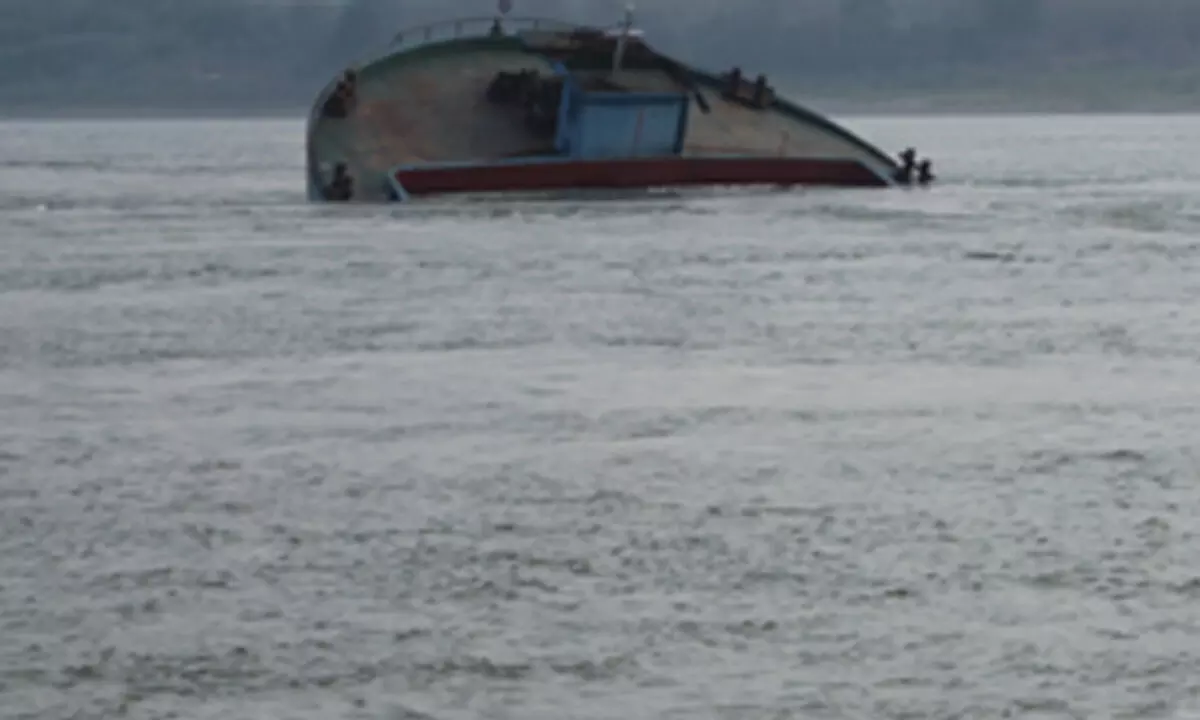Live
- They always want me to win, and now I feel lucky to have been offered a story like ‘Zebra’: Satyadev Kancharana
- ‘Democracy first, humanity first’: PM Modi in Guyana's parliament on two countries' similarities
- PKL Season 11: Telugu Titans register third straight win to top standings
- Is Pollution Contributing to Your COPD?
- NASA Unveils Underwater Robots for Exploring Jupiter's Moons
- Additional Central forces arrive in violence-hit Manipur
- AR Rahman and Saira Banu’s Divorce: Legal Insights into Common Issues in Bollywood Marriages
- 82.7 pc work completed in HPCL Rajasthan Refinery area: official
- Curfew relaxation extended in 5 Manipur districts on Friday
- Tab scam prompts Bengal govt to adopt caution over fund disbursement
Just In
New Zealand naval ship sink raises concern of reef damage, oil leaks

The sinking of a New Zealand navy ship near the southern coast of Upolu in Samoa has caused concerns over reef damage and oil leaks' threat to the ecosystem.
Wellington: The sinking of a New Zealand navy ship near the southern coast of Upolu in Samoa has caused concerns over reef damage and oil leaks' threat to the ecosystem.
The multipurpose maritime support ship HMNZS Manawanui, with a displacement of 5,741 tons, struck a reef and was grounded off Samoa last Saturday while conducting a hydrographic survey one nautical mile from shore. All 75 people aboard were successfully rescued, Xinhua news agency reported.
Samoa has confirmed that the capsized Manawanui is leaking residual oil from three locations. Assessments show the area of physical destruction to the reef from the shipwreck and anchor chain, is roughly half the size of a large rugby pitch, according to Samoa's Marine Pollution Advisory Committee.
The effects of a catastrophic oil spill can persist over a long period as the chemical components of oil are absorbed by marine organisms and deposited in marine sediments. This can continue to have lasting effects on the fitness of populations of exposed animals, Bridie Allan, a lecturer of the Department of Marine Science, University of Otago, said on Saturday.
As oil is agitated at the surface due to wave and wind energy, the chemical components, including highly toxic heavy metals and polyaromatic hydrocarbons (PAHs), in the oil are weathered out, which results in the release of these chemicals into the water column where marine organisms may encounter them, Allan said.
Very small doses of these chemicals have been demonstrated across multiple scientific studies to cause a range of physiological effects such as cardiac, spinal and craniofacial deformities as well as behavioural impairments following exposure to low levels of PAHs, he said.
Associate Professor Nick Ling of the School of Science, University of Waikato, said there is considerable urgency to remove stranded heavy items from the reef and the fuel contained in the wreck before the arrival of the cyclone season.
"While coral reefs can naturally recover from such physical damage, this process can take many years depending on the scale of damage, although this can be facilitated by physically reattaching coral fragments," Ling said, adding this, however, can only be undertaken once debris from the wreck has been removed and the method is also dependent on the ability of divers to work in such relatively exposed conditions.
The Court of Inquiry into the sinking of the navy ship was assembled on Friday to collect and record evidence and report on the sequence of events leading up to the loss of the ship, the cause of the grounding and subsequent sinking, and details on notification procedures, injuries sustained and any environmental damage, said a statement from the New Zealand Defense Force (NZDF).
Built in 2003, the 84.7-metre-long, 18-metre-wide, 6.8-metre-draft ship has been in service with the Royal New Zealand Navy since 2019, and is primarily used for specialised diving, salvage and hydrographic missions around New Zealand and in the southwest Pacific Ocean, and can also support missions to clear explosive remnants of war in the South Pacific, according to the NZDF.

© 2024 Hyderabad Media House Limited/The Hans India. All rights reserved. Powered by hocalwire.com






